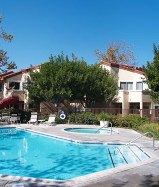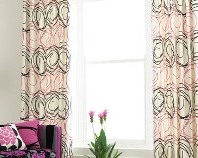Exploring the Souks of Marrakesh
 October 13, 2011
October 13, 2011  Ceramic Plates at a SoukJanet Ramin - Combine a light fever, sensory overload, and the feeling of Alice descending into a deep rabbit hole, and you may begin to understand what it’s like to step into the souks of Marrakesh. The rainbow of colors attracts you; the mysterious food scents entice you; the persistent calls of the vendors tempt you; and the allure of the unknown pulls you in. What could possibly be inside these traditional market places?
Ceramic Plates at a SoukJanet Ramin - Combine a light fever, sensory overload, and the feeling of Alice descending into a deep rabbit hole, and you may begin to understand what it’s like to step into the souks of Marrakesh. The rainbow of colors attracts you; the mysterious food scents entice you; the persistent calls of the vendors tempt you; and the allure of the unknown pulls you in. What could possibly be inside these traditional market places?
 Medina of MarrakeshIn Marrakesh, a city deep in the deserts of Morocco, the main commercial hub dating back to ancient times was found in the souks - markets massed together in a warren of twisting, narrow alleyways filled with shops selling food, clothing, household items, and the stuff of life. The Marrakesh souks begin off their main square, the Djemaa al Fna, or the Meeting Place of the Dead. In the old days, executions were held in this public square, serving as both entertainment as well as a warning.
Medina of MarrakeshIn Marrakesh, a city deep in the deserts of Morocco, the main commercial hub dating back to ancient times was found in the souks - markets massed together in a warren of twisting, narrow alleyways filled with shops selling food, clothing, household items, and the stuff of life. The Marrakesh souks begin off their main square, the Djemaa al Fna, or the Meeting Place of the Dead. In the old days, executions were held in this public square, serving as both entertainment as well as a warning.
I knew that the souks were numerous and confusing so I consulted many maps of Marrakesh and all I found were illustrations of spaghetti-style streets – most without names. Obviously this called for a leap of faith - or a deranged brain - so I just plunged right in. After the blazing desert sun, the canopy-covered souks felt like a cool embracing cave. Immediately I was assaulted with the scents of olives, dates, and spices. I wandered aimlessly from stall to stall, deeper and deeper into the alleyways, called derbs.
 Babouches at a SoukI started to notice a pattern – each stall displayed usually only one type of product but in infinite varieties ... and these stalls tended to stick together. One alley was lined with mostly souks selling the Moroccan babouches – or leather slippers. Another side was lined with clothing, selling the traditional djellabas or flowing robes.
Babouches at a SoukI started to notice a pattern – each stall displayed usually only one type of product but in infinite varieties ... and these stalls tended to stick together. One alley was lined with mostly souks selling the Moroccan babouches – or leather slippers. Another side was lined with clothing, selling the traditional djellabas or flowing robes.
 Tagines at a SoukMy personal interest, of course, was interior design so I headed for the souks with household furnishings. Plenty of souks were lined with ceramic plates and cookware. A typical Moroccan dish is lamb stew and they’re usually cooked in a tagine, a ceramic cooking vessel in the shape of a cone placed over a deep, round dish. The designs for the tagines and serving platters were quite spectacular; some had elaborate metal work superimposed on the sides, such as the hamsa or hand of Fatima – see photo above. Moroccans also love to serve tea, so there were plenty of stalls selling silver teapots and the small jewel-toned tea glasses.
Tagines at a SoukMy personal interest, of course, was interior design so I headed for the souks with household furnishings. Plenty of souks were lined with ceramic plates and cookware. A typical Moroccan dish is lamb stew and they’re usually cooked in a tagine, a ceramic cooking vessel in the shape of a cone placed over a deep, round dish. The designs for the tagines and serving platters were quite spectacular; some had elaborate metal work superimposed on the sides, such as the hamsa or hand of Fatima – see photo above. Moroccans also love to serve tea, so there were plenty of stalls selling silver teapots and the small jewel-toned tea glasses.
I was also determined to find a Moroccan lamp.












